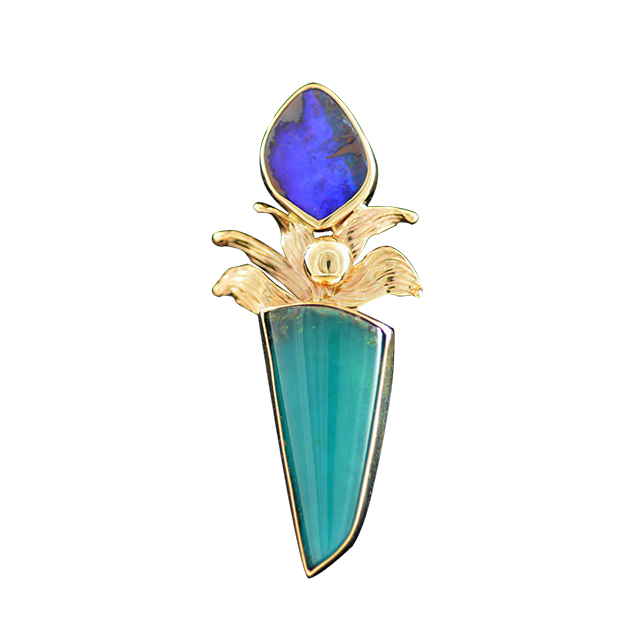SOLD
Original Pin/Pendant: SS/14k - Labradorite
Original Pin/Pendant: SS/14k - Labradorite
2.25" x .75" x .5"
What is Labradorite?
Labradorite is a feldspar mineral of the plagioclase series that is most often found in mafic igneous rocks such as basalt, gabbro, and norite. Labradorite is so well known for displays of spectacular color that the phenomenon is known as "labradorescence."
What Causes Labradorescence?
Labradorescence is not a display of colors reflected from the surface of a specimen. Instead, light enters the stone, strikes a twinning surface within the stone, and reflects from it. The color seen by the observer is the color of light reflected from that twinning surface. Different twinning surfaces within the stone reflect different colors of light. Light reflecting from different twinning surfaces in various parts of the stone can give the stone a multi-colored appearance.





